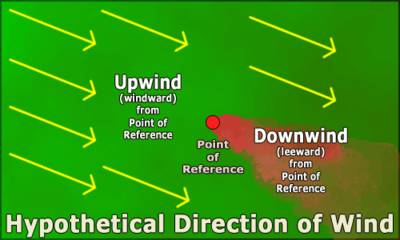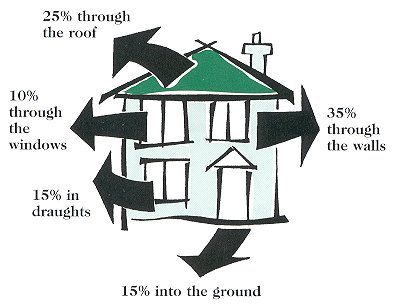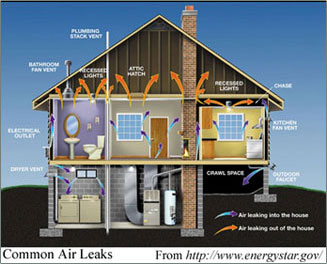Energy Efficiency
Indoor Air Quality
Water Conservation
Resource Conservation
Community Design.
Our spring winds are here, brrrrrr, so our air quality outside is excellent, if bitter and blustery. Indoor air quality can be another story. Air inside homes can be 10 times more polluted than outdoor air. Commonly used adhesives, paints and finishes contain compounds that are known to cause cancer or trigger asthsma. Poor ventilation can also lead to excessive dust and mold, which also have adverse health affects.
 |
| Maineaudit.com |
Indoor air quality upgrades include low-VOC building products, carpets and flooring, insulation, Energy Star bath fans, sealed front fireplaces, range hoods properly vented to outdoors, MERV 6+ filter, and tight airducts.
Poor ventilation in appliances such as furnaces, water heaters and clothes dryers, along with leaky ductwork in your heating and cooling system may cause "backdrafting". This is where gases are drawn back in to the living area, from the interstitial places in the building, rather than to the outdoors. Outdoor air is of much higher quality than the air from inside the walls, so getting your ductwork up to snuff can really make a difference in indoor air quality.
 |
| ACDOC |
Making these improvements to your home will improve your quality of life and protect your family's health, as well as add value to your home should you decide to sell. If you are buying, you can keep an eye out for these features, or consider an energy efficient mortgage to get these upgrades completed when you purchase.






